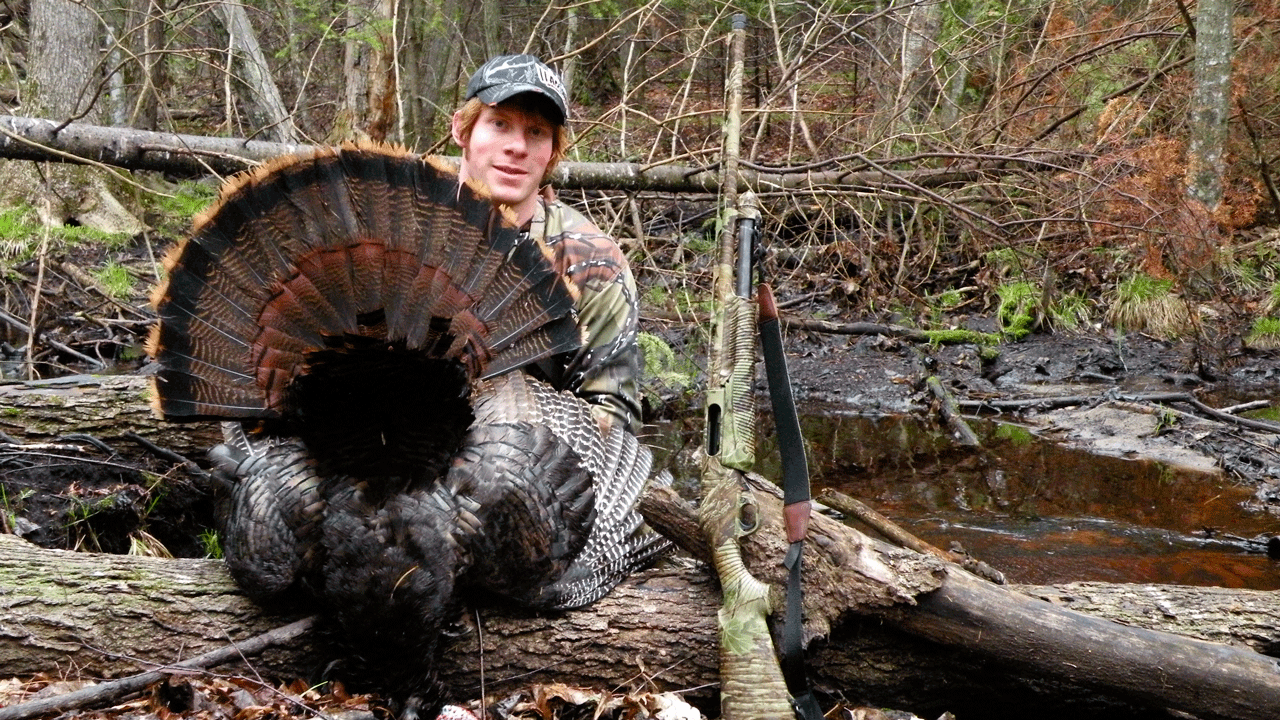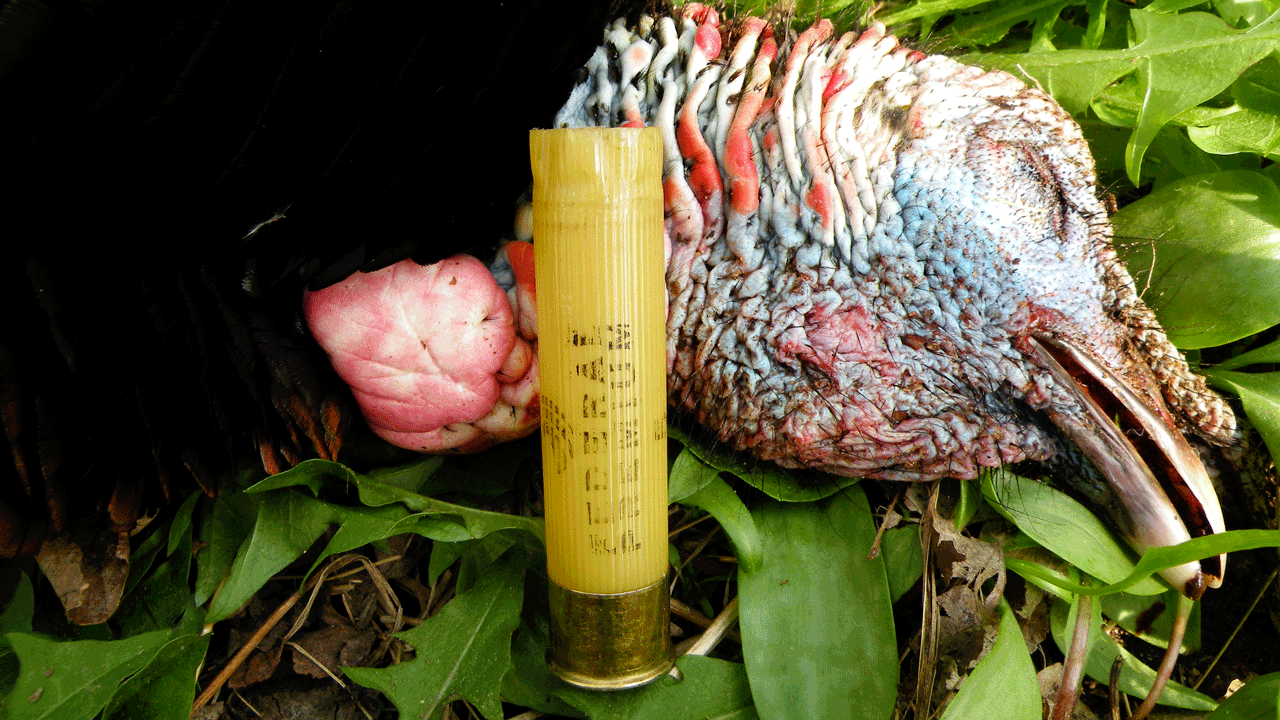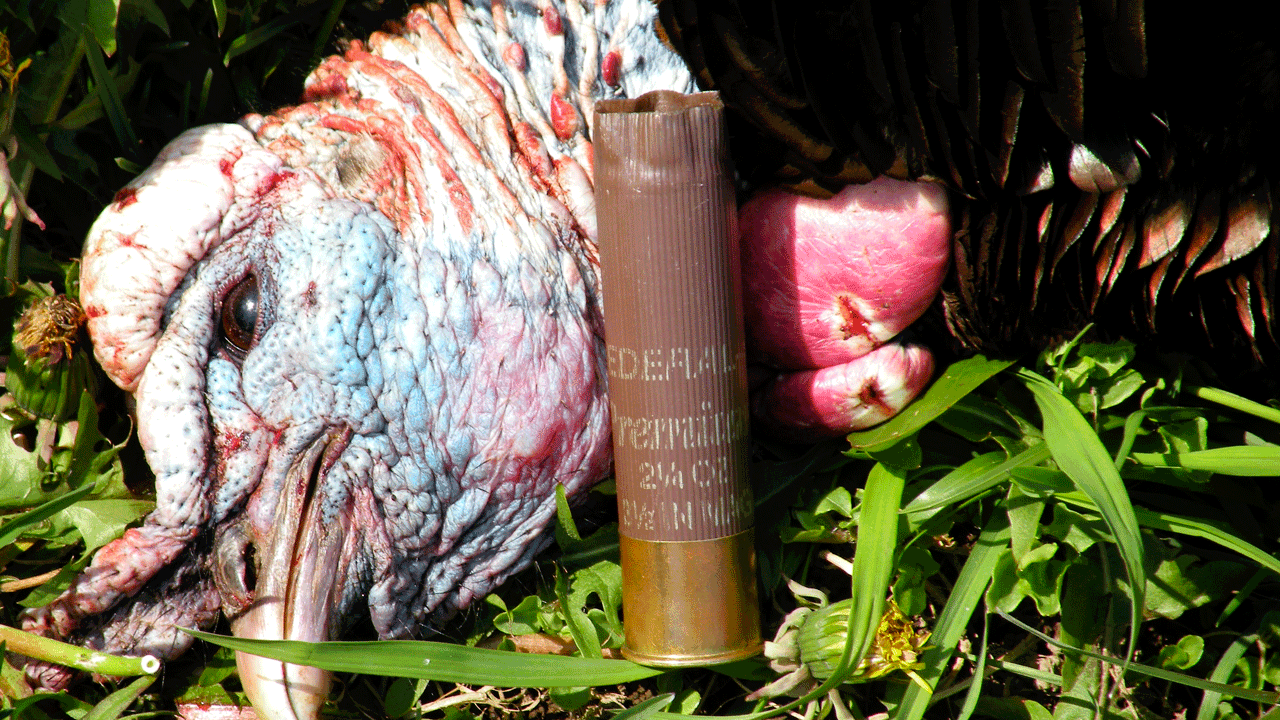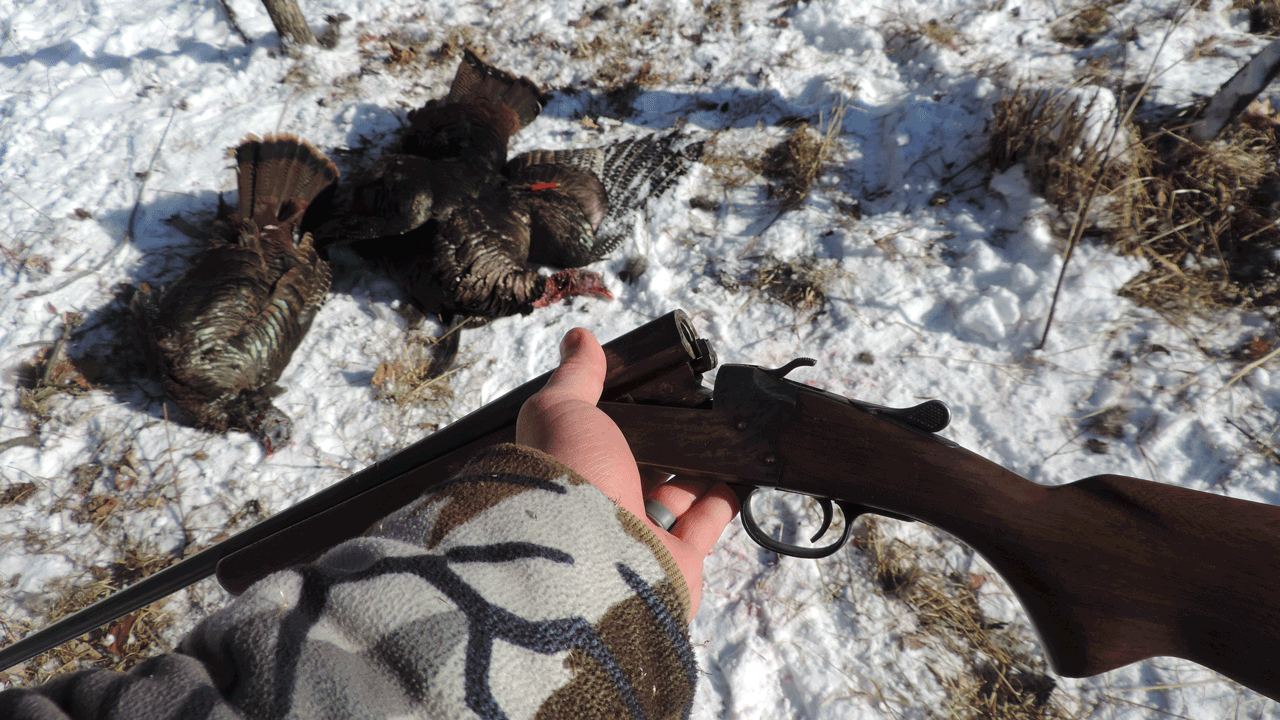by Darron McDougal
After hunting all morning and past noon without hearing a gobble, I knew I needed to cover some ground. While walking and calling down a four-wheeler path at a steady clip, I rounded a corner and was greeted by a strutting longbeard. He was facing directly away from me in the trail only 20 yards away. I rolled to my knees and cocked the hammer back.
Moments later, the gobbler spun sideways. Instantly, the double-barrel 10-gauge roared, and my shoulder felt like it’d been kicked by a mule. I hate to sound stupid, but I kind of liked the pain, for it meant I’d succeeded. I walked over and collected my midday prize.
I’m an advocate for big guns for hunters capable of handling them. Plus, when gobblers halt at 40 or 50 yards — in some cases, farther — I like the ability to reach out and touch ‘em. However, a well-pattered 12-gauge will do everything a 10-gauge can do, therefore defeating the need for such a heavy gun, unless you want to try something different or already own one.
While I like the range of 10- and 12-gauge shotguns, especially when time is short and I’m in tag-filling mode, I must admit that a long-range bird doesn’t bring near the rush of a 15-yard bird pouncing on my jake decoy. Thus, I naturally opt for my bow. But, to keep things interesting, I also occasionally borrow 20-gauge and .410-bore shotguns, which have 40- and 20-yard maximum ranges, respectively. Either would’ve been sufficient medicine for the tom referenced above.
Since I’ve take gobblers with all four gauges I’ve mentioned, let’s delve into each one’s place in the turkey woods in order of most common to least common. Which shotgun gauge is best for turkeys? Well, it certainly depends on who you ask, but here’s a look at some of the main players and how they perform in the turkey woods.
12-Gauge
The 12-gauge is obviously the most common turkey gun. More turkey loads can be found for the 12-gauge than all others combined. It’s a versatile gun that can also double as a waterfowl gun, among other uses. Pump-action styles are most popular since they’re more affordable, but the semi-automatic actions reduce recoil since they immediately eject the shell when fired.
I killed my first six birds with a bow, but after borrowing a 12-gauge and killing my seventh turkey with it, I knew I’d like a turkey gun of my own. I chose a Benelli Nova pump-action shotgun — a great bridge between affordability and performance. I secured it for $275. My beloved Nova has claimed dozens of birds at the hands of my family and me.
A few shell sizes are available, depending on what your 12-gauge is chambered for. Mine is chambered for shotshells up to 3 ½ inches, so it will shoot 2 ¾-, 3- and 3 ½-inch shotshells. Of course, the 2 ¾-inch loads should be reserved for youth or women hunters who can’t — and shouldn’t — harness the mule kick of a magnum 3- or 3 ½-incher or be shooting long ranges.
Now, some folks argue that the 3 ½-inch shells aren’t advantageous over 3-inch shells, but I have yet to find a 3-incher that matches the performance of 3 ½-inch Winchester Longbeard XR and Hevi-Shot Magnum Blend shells, which pattern beyond well enough to cleanly dump gobblers out to 60 yards with my Nova.
In all, a 12-gauge with a great choke/load combination will outperform most 20-gauge guns in the distance department. But, for weaker hunters, it can be a burden to tote.

20-Gauge
For youth, women or aging hunters, the 20-gauge is a good companion since most makes/models are lighter, shorter and more maneuverable than their 12-gauge big brothers. Keep in mind, though, that lighter 20-gauges will kick harder than heavier ones of the same action type. This fact applies to all gauges, in fact.
Turkey hunters toting 20-gauges are limited to 2 ¾- and 3-inch loads. My mother and I have both dropped toms at 40 and 35 yards, respectively, using Federal Mag-Shok 3-inch turkey loads, proving that the right 20-gauge gun, load and shooter still can reach out and spank stubborn toms. Still, you won’t be taking down gobblers at 50-plus yards, unless you get into the TSS turkey loads, which are grounds for another article altogether.
Overall, the 20-gauge is a widely accepted turkey gun, but with definite distance limitations in most cases. Again, this makes it a great gun for beginners or those who shouldn’t be attempting long shots anyway.

10-Gauge
The 10-gauge I used to take the tom referenced earlier delivers a killing pattern out to 40 yards, which isn’t very impressive. But, it’s not really designed to be a turkey gun. In fact, it’s an old break-action gun with a traditional flavor, which I like.
Now, more modern 10-gauge pump-actions and semi-autos are available and will likely pattern better, but unless you feel you can handle the additional mass weight and recoil, you’re better off choosing a 12-gauge gun. However, some folks already own 10-gauges for goose hunting, and if you can screw in a turkey choke, there’s no need buy a separate turkey gun.
In addition to the tom, I’ve enjoyed taking two fall birds including a bearded hen and a pure white hen with another break-barrel single-shot 10-gauge. I like to keep turkey hunting interesting by using different weapons, and for me, that has meant occasionally toting the 10-gauge. Perhaps you’ll find yourself doing the same.

.410-Bore
Considered nothing more than a squirrel duster by most, the .410-bore also has its place in the turkey woods. I’m sure some cynics will read this article and criticize me for saying that, but I’ve taken two turkeys, a tom and a hen, using a break-barrel .410-bore borrowed from my grandpa. Both dropped in their tracks just as they would’ve with a 12-gauge.
The key with any shotgun, this one included, is to determine its limitations. This means lots of range time and testing multiple loads at various distances. Some .410s can interchange choke tubes, but not the one I used. I found the best density with a 2 ½-inch Fiocchi load. While I’m confident I could drop a tom with the gun at 22 yards, 20 yards and in is a sure bet with many spine hits, so that is my absolute limit.
Last December, I belly-crawled to 20 yards of a flock of birds, but decided to steal 2 yards closer just to make sure. At 18 yards, I rolled over a tom, then quickly reloaded and dumped a hen at 15 yards as she was departing. Two shots, two birds. Argue or criticize if you want, but the .410 is a deadly turkey gun in skilled hands and at ultra-close ranges. In fact, in states where kids can hunt at any age and where .410s are legal, I believe it’s the best option for sheer maneuverability. Don’t let the youngster fire unless the tom is in the decoys 15 yards away or closer.
I’m sure some are stilling thinking, “What’s the point of limiting yourself to 20 yards?” As I said earlier, having a tom in the decoys is an entirely different experience than brooming one from 50 yards. The in-your-face encounter is tough to beat, and it’s what keeps me coming back.

Closing Thoughts on What’s the Best Shotgun Gauge for Turkeys
So what’s the best shotgun gauge for turkeys? I’d encourage you to get out there and test them all to see which works best for the way you hunt. Regardless of the gauge you choose for gobblers, it’s crucial to practice extensively and with multiple loads and choke tubes (if applicable) to determine your weapon’s maximum effective range. Once determined, never exceed it while hunting. That goes for the 12-gauge just as it does for the .410-bore. If you do, you’ll cripple birds, and that’s simply not a respectable or responsible image to portray.
Hunting is all about ethics, and I feel that all four gauges I’ve covered here, as well as the 28-gauge which I didn’t, have an ethical range in the turkey woods. Have that mindset, and you can pick a gauge that aligns with your goals for the type of hunt and range you want while still achieving deadly results.